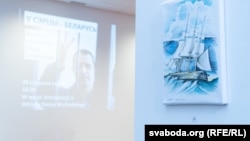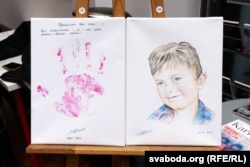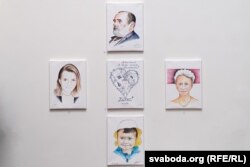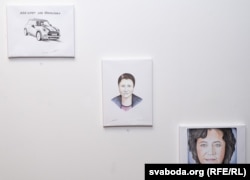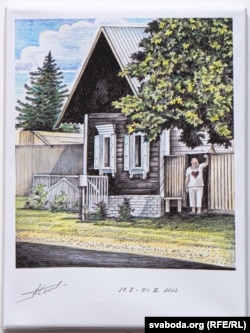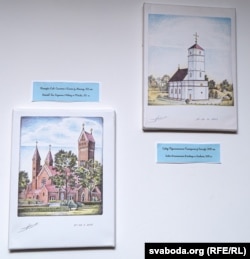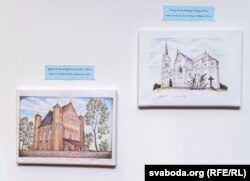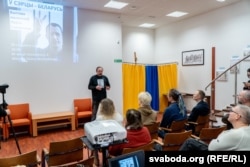WARSAW -- An exhibition called In The Heart Of Belarus in Warsaw unveils the drawings of political prisoner Paval Sevyarynets, created during his confinement.
The artworks, taken from letters he sent to his family, are poignant portraits and idyllic scenes of Belarus. Sevyarynets -- who has been recognized by international human rights groups as a political prisoner -- used pencils and notebook pages for the drawings, which were later enlarged for the exhibition.
Sevyarynets, a 48-year-old writer and opposition politician, is the co-chairman of the unregistered Belarusian Christian Democracy party. He was sentenced to seven years in prison by a regional court in the eastern city of Mahilyou in May 2021 on a charge of "organizing mass unrest" connected to the disputed 2020 presidential election.
Alyaksandr Lukashenka held onto power following the vote, but the results were widely deemed to have been falsified. As a result, the European Union, the United States, Canada, and other countries have refused to recognize Lukashenka as the legitimate leader of Belarus.
Pictures From Prison
The exhibition showcases around 70 images, including portraits of Sevyarynets' family, Belarusian churches, landscapes, and heartfelt messages to his son. Despite the challenges of isolation, Sevyarynets uses drawing to share stories and maintain a connection with his family.
The first drawing is titled Mini Cooper For Francis, the date, marked in Sevyarynets' handwriting, is June 10, 2020 -- the third day after his arrest.
Sevyarynets also drew a Belarusian electric bus and other cars.
During his confinement, Sevyarynets learned of the death of his father, who died on October 1, 2021. On October 2, he paid homage to his father with Portrait Of My Father: The Writer Kastus Sevyarynets.
The last drawing received by his family is titled Summer Cottage, drawn between February 27 and March 1, 2022, with the message: "Bye, Dad! We will definitely win." It shows an older man with his fist held high in defiance as he wears a red heart against a white outfit.
Despite having graduated from art school, Sevyarynets had not drawn in a long time, according to his wife, Volha, who went on to say that it was fascinating to see her husband progressively regain his skills.
Visitors' Responses
One of the visitors to the exhibition, Andrei, said: "How is it possible to create such interesting images behind bars without an easel, normal paper, or special drawing tools? It's a pity I can't ask the artist."
Sevyarynets' wife revealed to local media the secret to the accuracy of the images.
"People sent Paval a lot of postcards with Belarusian landscapes, and he redrew the churches from them," Volha said.
During the opening of the exhibition, politicians, friends, and associates shared their memories of Sevyarynets while emphasizing the importance of showcasing works from political prisoners.
"It's good that we remember political prisoners. The best thing we can show is their work. This means that people are not broken behind bars, they continue to create beauty. It's sad that there are more and more police prisoners," said Tatsyana, one of the organizers.
"To draw such a picture in one of Lukashenka's prisons is a feat. Now, this is no longer possible. The system has become more rigid. And this exhibition of the works of political prisoner Paval Sevyarynets should be exhibited in every parliament in Europe," Belarusian opposition figure Vyachaslau Siuchyk said.
Paval Sevyarynets' book I Love Belarus and postcards featuring his artwork are on sale, with proceeds going toward aiding political prisoners and disabled people.




